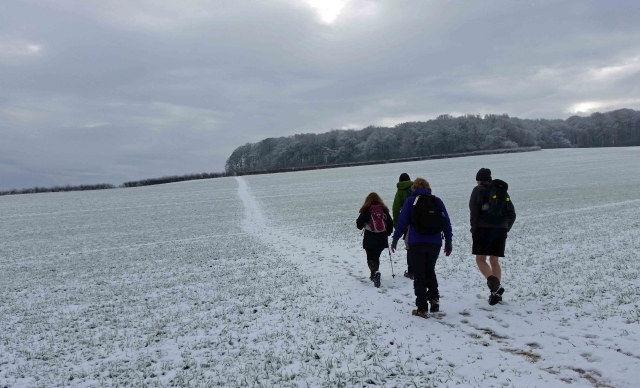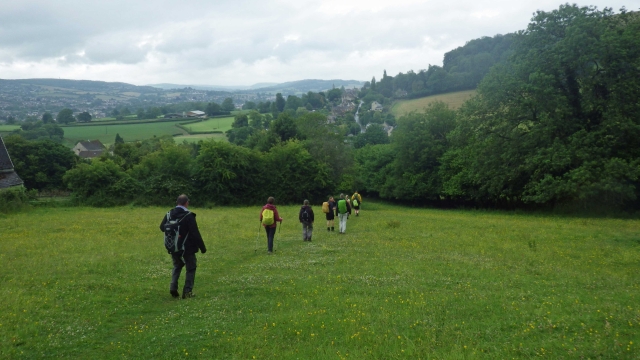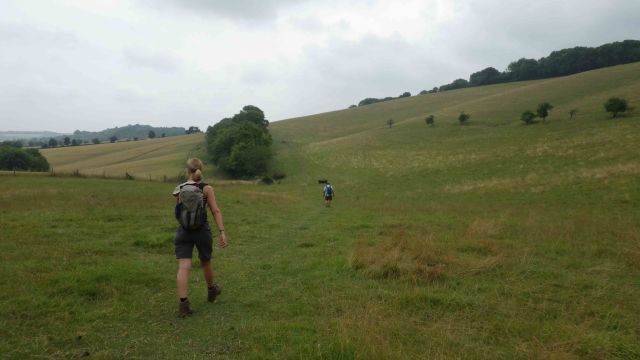
We offer a walk most, if not all, weekends.
The single most popular outdoor activity members of our group do is walking. Our walks could be local, often in the Chilterns or Thames Valley, or further away maybe as part of a weekend. During each year we offer routes over high and low terrain, short, medium and long distances, and in all weathers. Coastal walks, hill walking and mountain climbs. Walks through forests and along rivers and ridges. In the winter months the terrain and distance we walk tends to be a bit easier due to weather and light being less favourable.
We offer a range of walking so there is something for everyone. Shorter walks aimed at families and anyone who just wants something easy. Lots of medium distance walks aimed at most people; distances between 8 and 12 miles can be done by virtually anyone without practice. We also offer some longer distance routes each year, some 20- to 30-mile challenges, some led by members of our group, some more formal events with other groups. Some walks start in the morning (10am ish is a good time) whilst in the summer months some start early afternoon. Currently most of our local walks are on a Sunday but we do some walks on a Saturday and are looking to increase these. For all walks, food and drink should be considered, lunch is very important.

Chilterns, January 2016 - Photo by Anna
Walking is the most simple and natural form of exercise and requires minimum skill and clothing. Probably only three items of specialist clothing are essential. (1) A good pair of walking boots. You might get away with ordinary footwear if the terrain, distance and weather are kind but this is the exception not the rule. (2) A rucksack or backpack. You will want to carry water and food and other personal belongings. For longer harder walks you may want to carry some safety equipment and extra clothing. (3) A waterproof warm jacket. Walking in the rain is fun but less so if you are soaked to the skin! A fleece or windproof jacket will be needed on many occasions throughout the year.

Cotswolds, June 2015 - Photo by Anna
Most of our walking involves public rights of way - footpaths, bridleways (open to cyclists and horse riders too) and byways (open to motor vehicles too). Most are sign-posted but the quality and completeness of signs does vary. Waymarks (coloured arrows - yellow for footpaths, blue for bridleways, red for byways) may be used. Permissive paths may also be used, these are where a landowner has given permission for public use of paths on their private land. Likewise the quality of paths and terrain varies widely. Some paths are clean and clear, others overgrown and indistinguishable from adjoining land.

Ridgeway, July 2014 - Photo by Anna
New 'rights to roam' were introduced in 2005 to further increase accessibility of the countryside. Open country (defined as moor, mountain, down, heath and registered common land in England and Wales) are subject to regional rights of access. Broadly the 'right to roam' means we all have a right to 'wander at will, using any path or even walking away from the path'. This is in addition to all the current 'access land' such as open spaces, public parks and land owned by the National Trust, the Forestry Commission and the Woodland Trust, where wider access is already permitted. Access rules differ slightly in Scotland, broadly we are permitted to access to most land and footpaths providing we 'behave responsibly'. Summaries of both (from Ramblers) follow:
Summary of the Countryside Code: England and Wales
RESPECT - PROTECT - ENJOY
If you follow the Countryside Code wherever you go, you'll get the best enjoyment possible and you'll help to protect the countryside now and for future generations.
Summary of the Scottish Outdoor Access Code
KNOW THE CODE: ENJOY SCOTLAND'S OUTDOORS - RESPONSIBLY!
Everyone has the right to be on most land and water providing they act responsibly. When you're in the outdoors:
General information